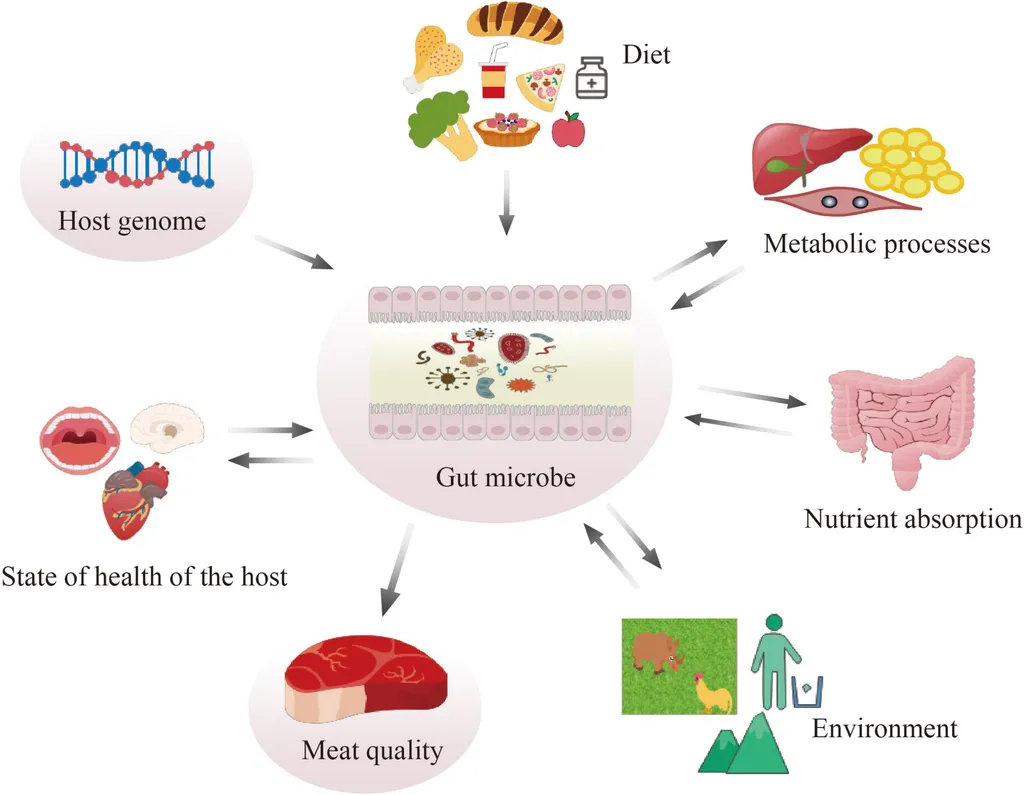In the world of poultry farming, the quest for quality and efficiency is unending. A recent study published in the journal PeerJ, which translates to “companion” in English, has shed new light on the intricate relationship between gut microbiota and fat deposition in meat pigeons. This research, led by Zhen Zhang from the Henan Province Engineering Technology Research Center of Livestock and Poultry Biotechnology Industrialization at Henan University of Animal Husbandry and Economy, could potentially revolutionize the way we approach pigeon farming and meat quality.
The study focused on two types of meat pigeons: European meat pigeons and Yuzhong pigeons. These birds, both 28 days old, exhibit significant differences in fat synthesis and weight. The researchers aimed to understand the molecular mechanisms by which the intestinal microbiota of these pigeons influences fat deposition. “We wanted to delve into the gut microbiota’s role in fat metabolism, as this is a critical indicator for assessing the quality of roast squab,” Zhang explained.
The findings were striking. The intestinal microflora structures of European meat pigeons and Yuzhong pigeons were significantly different. In European meat pigeons, a type of bacteria called Romboutsia was found to promote fat absorption and utilization by influencing lipid metabolism. On the other hand, in Yuzhong meat pigeons, Lactobacillus and Turicibacter facilitated fat decomposition by affecting bile acid transformation and β-oxidation.
The study also revealed that gut microbiota can influence the enzymatic activity of acetylCoA carboxylase through biotin synthesis, thereby affecting fat synthesis and overall transport and deposition of fat in the body. This is a groundbreaking discovery, as it provides a deeper understanding of how gut health can impact meat quality.
The implications of this research are vast. By understanding the specific bacteria that influence fat deposition, farmers can potentially manipulate the gut microbiota of their pigeons to improve meat quality. This could lead to the development of specialized probiotic products tailored for meat pigeons, enhancing the efficiency and profitability of pigeon farming.
Moreover, the study’s use of a monogastric animal simulation digestive system to evaluate the effects of intestinal digesta on pigeon milk digestion and absorption opens up new avenues for research. This method could be applied to other poultry species, potentially leading to broader applications in the poultry industry.
As Zhang put it, “This study lays the foundation for developing specialized probiotic products for meat pigeons, which could significantly improve the quality of roast squab and enhance the overall efficiency of pigeon farming.”
In the ever-evolving world of agritech, this research is a testament to the power of scientific inquiry. It not only deepens our understanding of gut microbiota and fat metabolism but also paves the way for innovative solutions in poultry farming. As we continue to explore the complexities of the gut microbiome, the potential for improving meat quality and farming practices is immense. This study, published in PeerJ, is a significant step forward in that journey.

